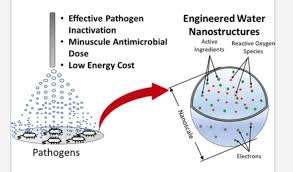
Breaking News
 NonConformist Series: Practical Wealth - Join us virtually Dec 29-30, 2025
NonConformist Series: Practical Wealth - Join us virtually Dec 29-30, 2025
 New bill would allow private citizens to fight cartels: 'WE ARE UNDER ATTACK'
New bill would allow private citizens to fight cartels: 'WE ARE UNDER ATTACK'
 Carnivore Got Me 90% There. This One Drink Changed Everything
Carnivore Got Me 90% There. This One Drink Changed Everything
Top Tech News
 Perfect Aircrete, Kitchen Ingredients.
Perfect Aircrete, Kitchen Ingredients.
 Futuristic pixel-raising display lets you feel what's onscreen
Futuristic pixel-raising display lets you feel what's onscreen
 Cutting-Edge Facility Generates Pure Water and Hydrogen Fuel from Seawater for Mere Pennies
Cutting-Edge Facility Generates Pure Water and Hydrogen Fuel from Seawater for Mere Pennies
 This tiny dev board is packed with features for ambitious makers
This tiny dev board is packed with features for ambitious makers
 Scientists Discover Gel to Regrow Tooth Enamel
Scientists Discover Gel to Regrow Tooth Enamel
 Vitamin C and Dandelion Root Killing Cancer Cells -- as Former CDC Director Calls for COVID-19...
Vitamin C and Dandelion Root Killing Cancer Cells -- as Former CDC Director Calls for COVID-19...
 Galactic Brain: US firm plans space-based data centers, power grid to challenge China
Galactic Brain: US firm plans space-based data centers, power grid to challenge China
 A microbial cleanup for glyphosate just earned a patent. Here's why that matters
A microbial cleanup for glyphosate just earned a patent. Here's why that matters
 Japan Breaks Internet Speed Record with 5 Million Times Faster Data Transfer
Japan Breaks Internet Speed Record with 5 Million Times Faster Data Transfer
New Tech Will Disinfect Everything and Help Stop Infectious Diseases

They used a nano-enabled platform developed at the center to create and deliver tiny, aerosolized water nonodroplets containing non-toxic, nature-inspired disinfectants wherever desired.
They take water and turn it into an engineered water nanoparticle, which carries its deadly payload, primarily nontoxic, nature-inspired antimicrobials, and kills microorganisms on surfaces and in the air.
You need 12 volts DC, and it is combined with electrospray and ionization to turn water into a nanoaerosol, in which these engineered nanostructures are suspended in the air. These water nanoparticles have unique properties because of their small size and also contain reactive oxygen species. These are hydroxyl radicals, peroxides, and are similar to what nature uses in cells to kill pathogens. These nanoparticles, by design, also carry an electric charge, which increases surface energy and reduces evaporation. That means these engineered nanostructures can remain suspended in air for hours. When the charge dissipates, they become water vapor and disappear.

 Aluminum Causes Brain Damage
Aluminum Causes Brain Damage Advanced Propulsion Resources Part 1 of 2
Advanced Propulsion Resources Part 1 of 2

